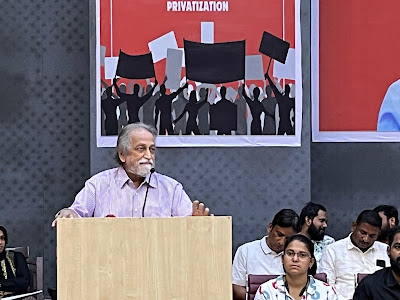Kolhapuri Chappals: From Historic Roots to Modern Economic and Social Transformation
Maharashtra’s Kolhapuri chappals, iconic handcrafted leather sandals, are more than just footwear; they symbolize centuries-old tradition, modern economic prosperity, and social change.
A Historic Legacy
Kolhapuri chappals trace their origins back to the 13th century during the reign of King Bijjala and his visionary prime minister Basavanna. Initially crafted by the Chambhar community using vegetable-tanned buffalo leather, these sandals became renowned for their durability and unique open-toe designs. By the 18th century, under the patronage of King Shahu Maharaj, the craft gained prominence, evolving into the Kolhapuri chappals known today. Their cultural and historical significance was cemented when they received a Geographical Indication (GI) tag, preserving their heritage.
Economic Evolution
Kolhapuri chappals have transitioned from a rural craft to a globally recognized leather brand. Today, the industry is India’s second-largest leather hub, generating employment for thousands of artisans, predominantly from Scheduled Castes and Other Backward Classes (OBC).
- Increased Employment: The rise of Kolhapuri chappals as a premium leather brand has provided consistent income, lifting many artisans out of poverty.
- Export Growth: With exports to countries like the U.S., UK, and Gulf nations, the industry now serves a global clientele, contributing significantly to India’s leather exports.
- Skill Development: Initiatives such as Skill India and MSME support have modernized production while preserving traditional methods.
- Sustainability: Artisans are integrating eco-friendly techniques, ensuring the industry aligns with global sustainability standards.
Social Impact
The Kolhapuri chappal industry has significantly transformed the social fabric of Maharashtra’s rural communities:
- Empowerment of Marginalized Groups: Artisans from historically marginalized communities, including women, have gained economic independence, improving their social standing.
- Community Building: Women-led producer cooperatives have emerged, fostering collective growth and enhanced production capacity.
- Preservation of Tradition: The craft’s global recognition has infused a sense of pride among artisans, motivating younger generations to continue the legacy.
Challenges and the Road Ahead
Despite its success, the industry faces challenges like inconsistent raw material supply, competition from counterfeit products, and labor shortages. Government policies and market interventions remain crucial in addressing these issues.
A Heritage Reimagined
Kolhapuri chappals epitomize a harmonious blend of tradition and modernity. As they stride confidently into international markets, they serve as a testament to the resilience and ingenuity of Maharashtra’s artisans. This historic craft continues to create pathways for economic and social transformation while preserving its timeless legacy.










